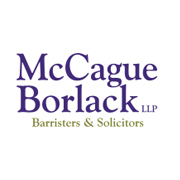by Marla Kuperhause
This paper was first presented at a client seminar.
In the context of subrogated claims, the Ontario Sale of Goods Act (“SOGA”) gives rise to a potential cause of action that must be considered in order to ensure that all potential defendants are named in the claim. As claims handlers and counsel, it is important to determine whether a party to a sales contract upheld its obligations, namely that the goods sold were fit for the intended purpose and were of merchantable quality.
Section 2(3) of the SOGA indicates a sale is a contract whereby the property in goods is transferred from the seller to the buyer.1This goes hand in hand with section 18 which states that “property passes when it is intended to pass,”2 meaning that ownership of the property is transferred when the parties intend for it to transfer. Examining these two sections together with section 34, “the buyer shall be deemed to have accepted the goods when the buyer:
- intimates to the seller that the goods have been accepted,
- after delivery, does any act in relation to them that is inconsistent with the ownership of the seller; or
- after the lapse of a reasonable period of time, retains the goods without intimating to the seller that they have been rejected.”3
These sections aim to provide clear indication as to when a sale has occurred. However, in reality, it is not always obvious. The issue of intention is highly litigated, and there is ample case law that addresses whether or not the goods have been transferred to or accepted by the buyer.
Section 19 provides additional guidance with respect to ascertaining the parties' intentions as to when the property in the goods passes from the seller to the buyer. These rules require an assessment of the various stages of the contract process, including:
- when the contract is made,
- when the seller does what they are bound to do,
- when the seller weighs, measures, or tests the goods,
- when the goods are delivered to the buyer; and
- when the buyer accepts the goods.4
Both sections 18 and 19 assume that the buyer and seller have equal power in the contract; however, a principal purpose of the SOGA is to rectify the power imbalance between the parties.
Though the SOGA addresses the intentions of the parties and purports to determine when a sale has been completed, it fails to address the involvement of other key parties, such as manufacturers, suppliers, and distributors. Nevertheless, claims handlers and counsel must consider these parties' potential involvement and liability exposure prior to issuing a statement of claim.
Claims under SOGA
Under section 15 of SOGA, there are two implied conditions that must be met in a sale of goods contract, regardless of whether the seller is also the manufacturer:
- that the goods will be reasonably fit for a specific purpose, and
- that the goods will be of merchantable quality.5
The relevant sections are as follows:
Section 15.1: Where the buyer, expressly or by implication, makes known to the seller the particular purpose for which the goods are required so as to show that the buyer relies on the seller's skill or judgment, and the goods are of a description that it is in the course of the seller's business to supply (whether the seller is the manufacturer or not), there is an implied condition that the goods will be reasonably fit for such purpose, but in the case of a contract for the sale of a specified article under its patent or other trade name there is no implied condition as to its fitness for any particular purpose [emphasis added].6
Section 15.2: Where goods are bought by description from a seller who deals in goods of that description (whether the seller is the manufacturer or not), there is an implied condition that the goods will be of merchantable quality, but if the buyer has examined the goods, there is no implied condition as regards defects that such examination ought to have revealed [emphasis added].7
When considering whether there is liability exposure on the part of the seller, it is critical to first determine whether the implied conditions set out in Section 15 have been triggered.8 If they have, then we must determine whether there was a contract and if the buyer accepted the goods.9 If so, then the “breach of any condition to be fulfilled by the seller can only be treated as a breach of warranty and not as a ground for rejecting the goods and treating the contract as repudiated.”10 In Muskoka Fuels v Hassan Steel Fabricators Ltd.,11 the court confirmed that when determining fitness for a particular purpose, under Section 15.1, the following factors must be considered:
- the course of the seller's business,
- knowledge on the part of the seller of the purpose of the goods, and
- reliance on the seller's skill or judgment.
In determining section 15.2 (merchantability), one should consider the following factors:
- whether goods were bought by description,
- if the seller deals in goods of that description, and
- whether the buyer examined the goods.12
In addition, according to Schreiber, the purchaser/plaintiff has the onus of proving the existence of a defect, which is something to be taken into consideration as well.13
Moreover, Nordic Aero Services Inc. v. Air Canada,14 Lord Wright came to the following conclusion regarding "merchantable quality":
"...if goods are sold under a description which they fulfill, and if goods under that description are reasonably capable in ordinary user [sic] of several purposes, they are of merchantable quality... if they are reasonably capable of being used for any one or more of such purposes, even if unfit for use for that one of those purposes which the particular buyer intended."15
In JB Printing Ltd. v. 829085 Ontario Ltd.,16 the Court points to Fridman,17 who asserts that only the following three of the six factors are required to find a seller liable under section 15:
- the buyer needs to rely on the seller's skill or judgment,
- the seller has knowledge of the purpose (here, the onus is on the purchaser/plaintiff as the plaintiff must show that it expressly or by implication made the purpose known to the seller18), and
- the contract must be in the course of the seller's business.19
Manufacturers
What happens when the goods sold contain a manufacturing defect? |
In order to advance a claim under the SOGA, there must be a contractual relationship between the buyer and seller. What happens when the goods sold contain a manufacturing defect? Does the buyer have any rights against the manufacturer, or is the buyer limited to advancing a claim against the seller due to a lack of privity of contract?
The SOGA applies to contracts between sellers and buyers, as noted in section 2(1):
“A contract of sale of goods is a contract whereby the seller transfers or agrees to transfer the property in the goods to the buyer for a money consideration, called the price, and there may be a contract of sale between one part owner and another.”20
The SOGA, and its implied terms, therefore, apply strictly to the contract between these parties, not to the product itself, as is stated in Resch v. Canadian Tire Corp.21
In Shandloff,22 a store sold a bottle of chocolate milk that contained glass fragments to the plaintiff, resulting in the plaintiff suffering injuries. The Ontario Court of Appeal stated that the store was liable for the plaintiff's injuries even though the store was not the manufacturer. This was because of the implied condition in section 15, specifically that the chocolate milk that was sold was to be of merchantable quality.23
The court in Pittman concurs as it stated that a supplier would have recourse against the manufacturer, but if the “chain of liability has been broken” then the seller will endure the risk of the loss.24
On the contrary, Harrison's The Law of Product Warnings and Recalls in Canada asserts that “a plaintiff claiming breach of contract does not need to prove a manufacturer failed to exercise reasonable care in designing and manufacturing the defective product. A breach of the terms of the contract is sufficient.”25
The balancing of these ideas is interesting to examine. A seller who is not also the manufacturer can be held liable if the goods are not of merchantable quality or fit for their intended purpose.
What about gifts? |
Gifts
What about gifts? Is the one who bought the gift technically the “buyer”, or is it the one who received the gift? This question is an important one since the SOGA focuses exclusively on buyers and sellers.
A buyer is defined under section 1 of SOGA as “the person who buys or agrees to buy goods.”26 In Resch v. Canadian Tire Corp., the court stated that the buyer is the one that “provide[s] the consideration and is a party or one of the parties to the contract of sale.”27
In that case, a family purchased a bicycle from the defendant's store for their son. It was stated that “the facts are more suggestive of a father buying a gift for his son, rather than as a co-buyer.”28 As such, the son who eventually receives the gift is not considered the buyer, as he was not a party to the sale contract. If the bicycle was determined to be not of merchantable quality, then only the father can bring a claim against the seller (or manufacturer).
Though the SOGA is a relatively straightforward piece of legislation, the reality is that it does not address many of the nuances involved in the chain of events that begins with the manufacturing of a good and ends with a product in a layperson's hands.
Prior to issuing any statement of claim involving a latently or patently defective good, claims handlers and counsel must consider every stage of the process and contemplate whether there is sufficient privity of contract to involve said parties in the litigation.
- Ontario Sale of Goods Act, R.S.O. 1990, c. S.2(3).
- Ontario Sale of Goods Act, R.S.O. 1990, c. S.18.
- Ontario Sale of Goods Act, R.S.O. 1990, c. S.34.
- Ontario Sale of Goods Act, R.S.O. 1990, c. S.19.
- Ontario Sale of Goods Act, R.S.O. 1990, c. S.1, s. 15.1. s. 15.2
- Ontario Sale of Goods Act, R.S.O. 1990, c. S.15.1.
- Ontario Sale of Goods Act, R.S.O. 1990, c. S.15.2.
- Waisberg v. Herb Caplan T.V. & Appliances Ltd, 2018 ONSC at para 59.
- Nordic Aero Services Inc. v. Air Canada 1995 ONCJ.
- Ontario Sale of Goods Act, R.S.O. 1990, c. S.12(3).
- Muskoka Fuels v Hassan Steel Fabricators Ltd, 2011 ONCA at para 12.
- Supra note 7.
- Schreiber Brother Ltd. V. Currie Products Ltd. et al, 1980 SCC.
- Nordic Aero Services Inc. v. Air Canada, 1995 ONCJ.
- Canada Atlantic Grain Export Co. v. Eilers (1929) in Nordic Aero Services Inc. v. Air Canada at para 68.
- JB Printing Ltd. v. 829085 Ontario Ltd, 2003 ONSC at para 40.
- Fridman, Sale of Goods in Canada, 4th ed (1995) at p186, in JB Printing Ltd. v. 829085 Ontario Ltd, 2003 ONSC.
- Supra note 17 at para 40.
- Supra note 17.
- Ontario Sale of Goods Act, R.S.O. 1990, c. S.2(1).
- Resch v. Canadian Tire Corp, 2006 ONSC.
- Shandloff v City Dairy Ltd, 1936 ONCA.
- Ibid.
- Pittman Estate v. Bain, 1994 ONCJ at para 9.
- Douglas Harrison, The Law of Product Warnings and Recalls in Canada, Chapter 1, 2nd ed (2013).
- Ontario Sale of Goods Act, R.S.O. 1990, c. S.1.
- Supra note 21 at para 22.
- Ibid at para 23.


